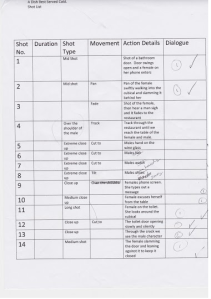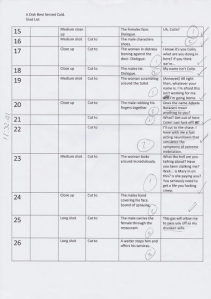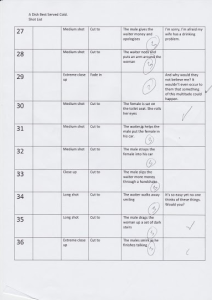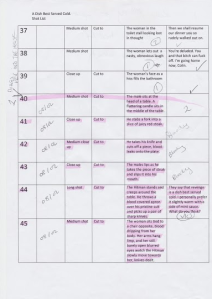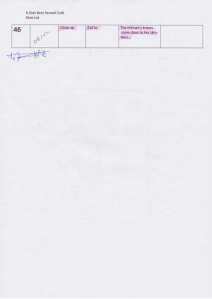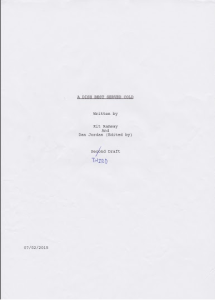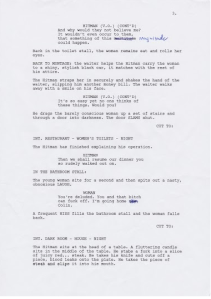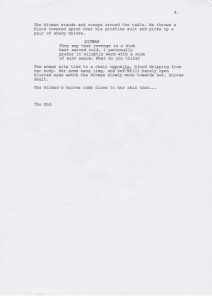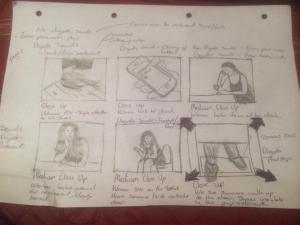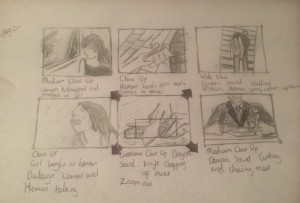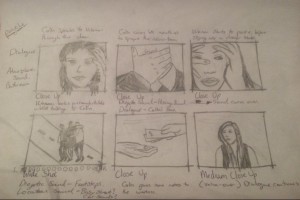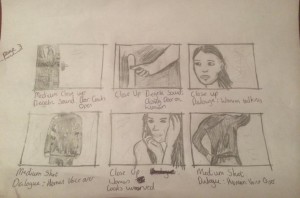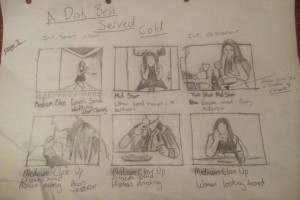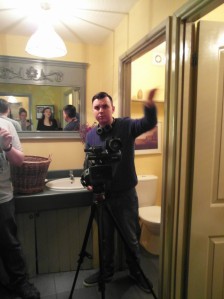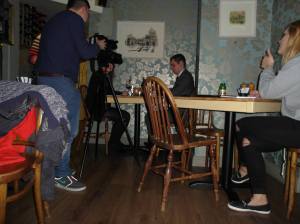JP 15/11/2015
Having read the latest version of the script there is one scene for me that give us great potential to demonstrate the movie’s horror elements. This particular sequence is not only important to our film but to most titles of this genre. This is the idea of the reveal. The sequence I am referring to involves our protagonist who has just entered this new world and stumbles across an alleyway. He slowly paces down the lane and stumbles across what he assumes to be a homeless man, but instead it’s the first reveal of the film’s monsters. In preparation for filming I have been watching many thrillers and horror movies for some inspiration, and for this particular sequence I will be referring to a film I feel has one of the best reveals in cinema. This is the first appearance of Leatherface in The Texas Chainsaw Massacre. As shown below, the scene sets up perfectly with a slow pan revealing the house the audiences knows is dangerous due to its framing with the camera metaphorically keeping its distance. The tension is built up with its slow pace and occasional eerie sounds. The build up to the reveal last a long time, keeping the view on the edge of their seat with tension, which is the cinematic feel I wish to convey in our film.
Another film that demonstrates a scene similar to our alleyway sequence is shown in A Nightmare on Elm Street. The cinematography in the scene I feel is excellent. The viewer is first displayed an over the shoulder shot, allowing the viewer to get a view similar to the characters perspective. It also allows space in this particular shot, setting up the mood of the film. The area is dark with blue lighting, with a small amount of sound giving an unnerving atmosphere.
In Beyond the Stars: Plot Conventions in American Film Paul Loukides speaks of two specific shot types associated to Horror films. ‘The subjective camera is a central technique is designed to experimentally incorporate the audience member into the projected action […]. The two major types of shots conventionally employed in horror films are the monster-point-of-view (MPOV) and the victim-point-of-view (VPOV). The former is the most common; it allows a shot of the terrorized victim while delaying the revelation of the monster. This increases the anticipatory tension of the viewing experience. The MPOV shot also allows the viewer to experience the distorted perception of the creature.’ This reference applies to the alleyway scene greatly as it will be shot, from both Michael, the protagonist, and the monsters perspective.
